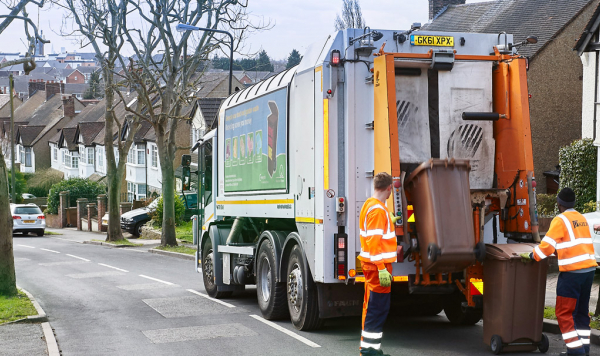Request
We are interested in the level of landfill your authority (or authorities within your waste planning area) uses.
1. Please confirm whether your authority (or authorities within your waste planning area) sends waste to landfill?
2. What was the % of waste sent to non-hazardous landfill over the last five years – by council tax year?
3. Please could you detail the top 10 landfill sites over the last three years used by % – by council tax year?
4. Have you (or authorities within your waste planning area) sent any items to landfill at Bletchley Landfill Site operated by FCC Environment in Milton Keynes? If so, why did you use this site?
5. Please confirm if the Council (or authorities within your waste planning area) is looking to decrease the amount sent to landfill and how the Council intends to do this
6. How will you (or authorities within your waste planning area) balance landfill against climate change initiatives?
Please supply information for predecessor organisations if there has been a recent local government change.
Response
REF: Request for information about the use of landfill
Thank you for your request of 6 April 2021 regarding the above. This request is being handled under the Environmental Information Regulations (EiR) 2004 and has been allocated the reference number 2021-111[1].
You asked if we could provide the following information – our responses are set out beneath each question:
Please confirm whether your authority (or authorities within your waste planning area) sends waste to landfill?
North London Waste Authority (NLWA) is the waste disposal authority for north London, serving seven north London boroughs and over 2 million residents. We do continue to use landfill disposal as a last resort when disposal to an energy-from-waste (EfW) facility is not possible. The amount we use has been consistently declining as part of an active plan to reduce the amount of landfill disposal for residual waste collected by the seven north London boroughs.
- What was the % of waste sent to non-hazardous landfill over the last five years – by council tax year?
This information is available in our Annual Strategy Monitoring Reports (AMRs) which are available on our website here: https://www.nlwa.gov.uk/ourauthority/our-reports
The percentage sent to landfill was as follows:
|
Year |
Percentage of local authority collected waste sent to landfill |
Comments or notes |
|
2015-16 |
12% |
105,570 tonnes |
|
2016-17 |
8% |
68,940 tonnes |
|
2017-18 |
9.5% |
78,959 tonnes |
|
2018-19 |
8% |
64,793 tonnes |
|
2019-20 |
5% |
24,331 tonnes |
Figure 22.1 in the 2017-18 report available on the webpage referenced above shows the position graphically over the years.
3. Please could you detail the top 10 landfill sites over the last three years used by % - by council tax year?
NLWA contracts with LondonEnergy Ltd to manage the residual waste from north London and the percentages of waste sent on behalf of NLWA to landfill sites over the last three years by percentage is as follows:
|
Year: |
2018-2019 |
2019-2020 |
2020-21 |
|
Landfill site and percentage of waste sent there |
|
|
|
|
Bletchley |
|
5% |
N/A |
|
Ockenden |
8% |
|
N/A |
Final information is not yet available for 2020-21.
4. Have you (of authorities within your waste planning area) sent any items to landfill at Bletchley Landfill Site operated by FCC Environment in Milton Keynes? If so, why did you use this site?
Yes, waste has been sent to the Bletchley landfill site at Milton Keynes.
It would be necessary to ask LondonEnergy Ltd for the specific reason this site was used. This response acts as a refusal notice for this part of your information request under the EiR Regulation 12 (4): (a) [the] Authority does not hold the information.
5. Please confirm if the Council (or authorities within your waste planning area) is looking to decrease the amount sent to landfill and how the Council intends to do this
NLWA aims to decrease the amount of residual waste sent to landfill as the figures above demonstrate.
A new waste transfer station was opened in Wembley by the Authority earlier this year to increase our recycling capacity. From the Wembley transfer station as much residual waste as possible will be transported by road to the Edmonton energy-from-waste facility in line with the proximity principle of disposing of the waste as close as possible to the point of generation. Any remaining residual material that cannot be treated at the Edmonton Plant will be in first instance redirected to another waste-to-energy facility to generate electricity, rather than landfilled which, from an environmental perspective, is the least desirable option for managing waste.
In the longer term the residual waste will go to a new energy-recovery-facility (ERF) located on the site of the existing energy-from-waste plant at Edmonton, which will be demolished. This replacement facility will have an increased capacity, generate more electricity and will also capture the heat from the process which will be used to heat local homes and businesses. You can find more information about this new facility at http://northlondonheatandpower.london/
6. How will you (or authorities within your waste planning area) balance landfill against climate change initiatives?
The North London Waste Authority has a clear aim to reduce the amount of residual waste we send to landfill. The North London Heat and Power Project (NLHPP) which is the project to redevelop the Edmonton EcoPark site to include a replacement energy-recovery-facility and associated works will enable us to do this.
The existing energy-from-waste (EfW) plant at the Edmonton EcoPark is coming to the end of its useful life. The existing plant has served north London well for nearly 50 years, but it needs replacing. The replacement energy-recovery-facility (ERF)[2] will be more thermally efficient than the existing plant, capture heat as well as generating electricity and be more modern in design and control. The replacement ERF forms a key part of the North London Heat and Power Project (NLHPP). The NLHPP includes the ERF as well as associated works, namely a new Resource Recovery Facility which will increase our capacity to extract material for recycling or reuse and for waste that can’t be recycled to be prepared for treatment, such as energy recovery; a new Reuse and Recycling Centre which will for the first time enable north London residents and businesses to bring material to the EcoPark for recycling; and a Visitor/Education Centre. ‘EcoPark House’ which will be the new home of the Edmonton Sea Cadets.
- The Energy Recovery Facility (ERF) will generate low carbon energy from waste, in the form of heat and power. You can find out more about the ERF here.
- The Resource Recovery Facility (RRF) will include an area to process bulky waste and prepare materials for energy recovery, as well as a brand-new Reuse and Recycling Centre for residents to use. You can find out more about the RRF here.
- EcoPark House on the River Lee Navigation will include a new community hub where residents can learn about the circular economy and how to reduce the carbon impact of their waste. You can find out more about EcoPark House here.
Landfill is extremely damaging for the environment and the worst option for dealing with non-recyclable waste. In contrast to landfill, the North London Heat and Power Project (NLHPP) will provide a clean, environmentally responsible solution for managing non-recyclable waste. Our new Energy Recovery Facility (ERF) will tackle the Climate Emergency by generating low-carbon heat and power, including heating and hot water for thousands of local homes in Edmonton.
There is no better solution for the waste which cannot be recycled. The Government’s independent climate advisors, the Climate Change Committee, have advised that landfill needs to be completely stopped, and that facilities like ours are part of the transition to a Net Zero carbon economy. We expect our world-class ERF to benefit from developing carbon capture technology, during its lifespan, as that technology evolves, which would bolster our efforts further to reduce the carbon impact of our residents’ waste.
The carbon accounting for the Energy Recovery Facility is transparent, fully documented in the public domain, and follows international scientific guidance set by the Intergovernmental Panel on Climate Change – the world’s preeminent independent climate science body. You can find more information on the NLHPP website at www.northlondonheatandpower.london
For any further information about the existing facility, please contact LondonEnergy Ltd who operate the facility by using the contact e-form available here: https://www.londonenergyltd.com/contact-us/ Further details about LondonEnergy’s approach to information requests is available here: https://www.londonenergyltd.com/about-us/freedom-of-information/
I trust this response provides the information you are looking for about how we are reducing our reliance on landfill, but if I can be of any further assistance, please do not hesitate to contact me if you have additional and/or more specific requests for information.
If you are dissatisfied with this response and wish to appeal, please reply to this email or submit a complaint via our website complaints page at: https://www.nlwa.gov.uk/enquiry-form
Your request should be submitted to us within 40 working days of receipt by you of this response.
If you are still not satisfied, you have a right to appeal to the Information Commissioner: https://ico.org.uk/global/contact-us/email/
Information Commissioner's Office
Wycliffe House
Water Lane
Wilmslow
Cheshire
SK9 5AF
0303 123 1113
Yours sincerely,
[1] Given the nature of our activities and the fact that environmental information is interpreted quite broadly we now generally answer information requests under the Environmental Information Regulations rather than the Freedom of Information Act. Further detail is available at: http://www.ico.gov.uk/for_organisations/environmental_information.aspx
[2] We use the term energy-recovery-facility (ERF) rather than ‘incinerator’ because the thermal efficiency of the plant will ensure that it is classified as a ‘recovery’ or R1 facility, rather than a ‘disposal’ facility, which is the description used for an incinerator.


